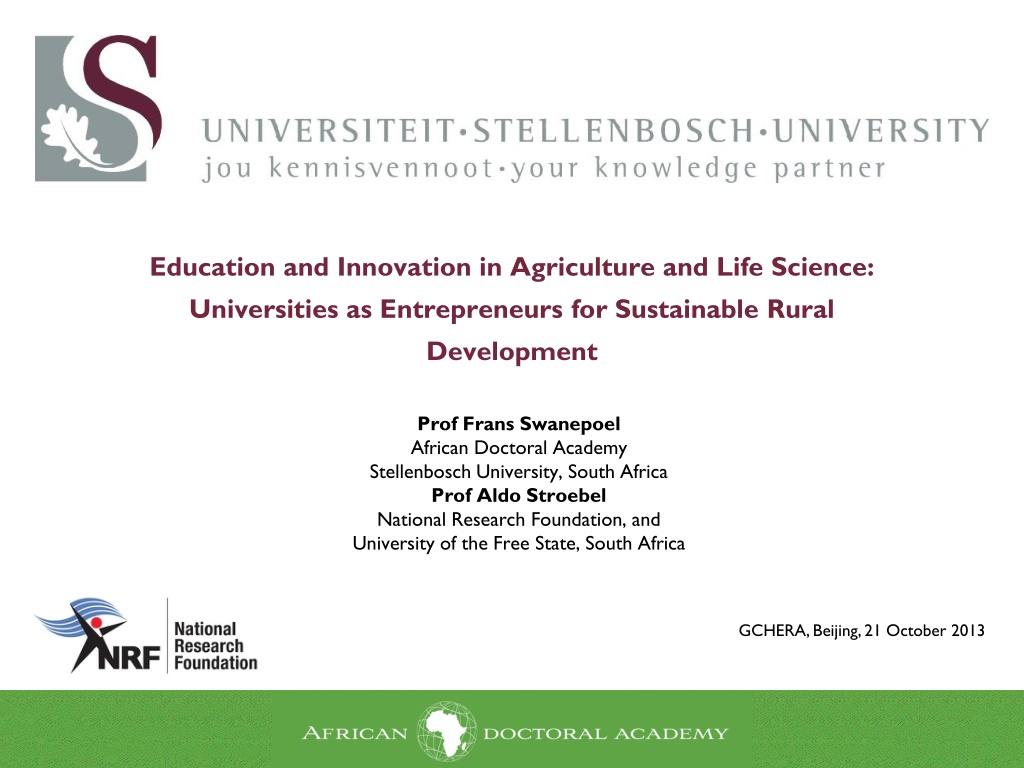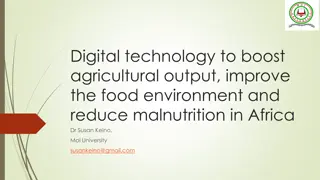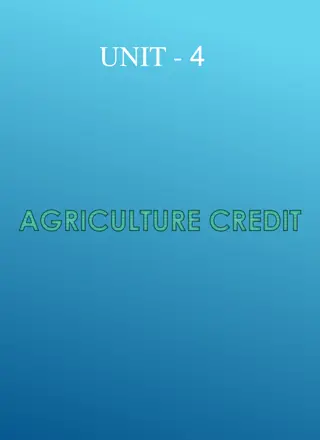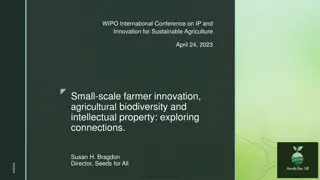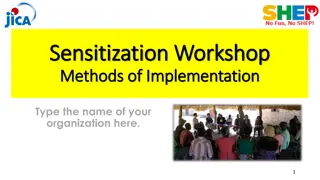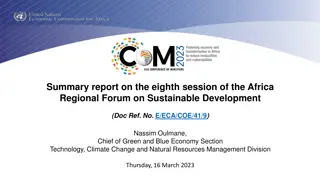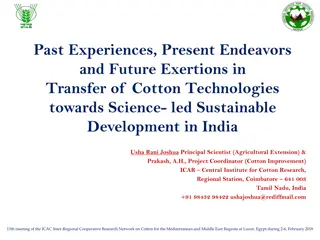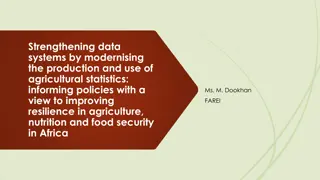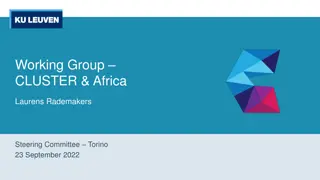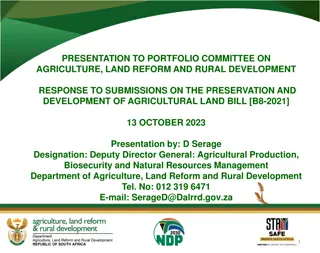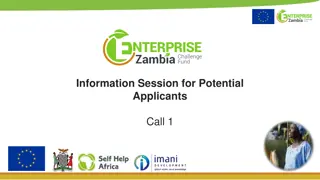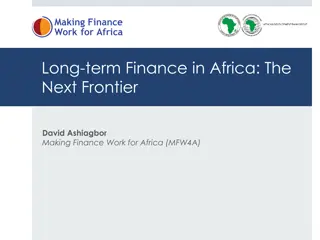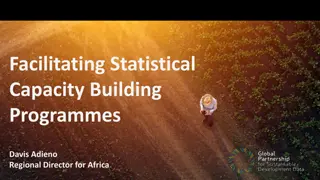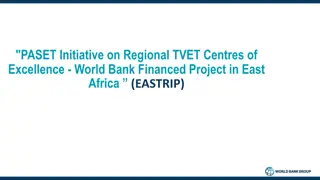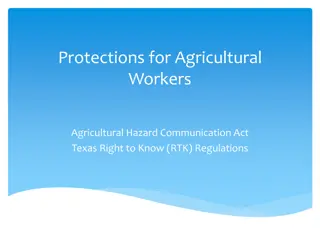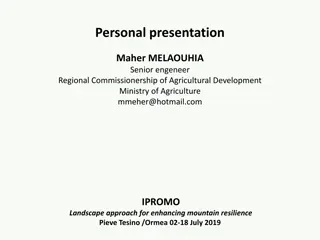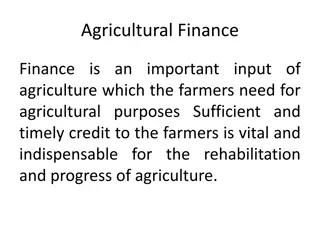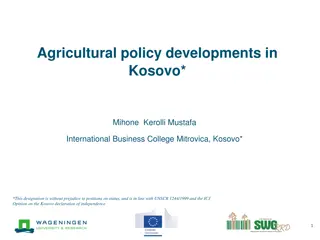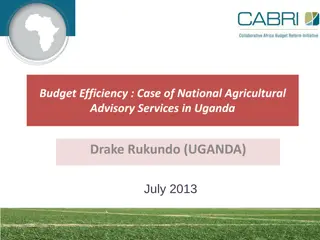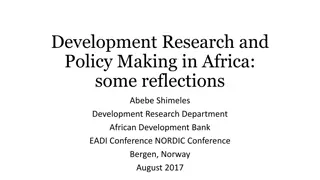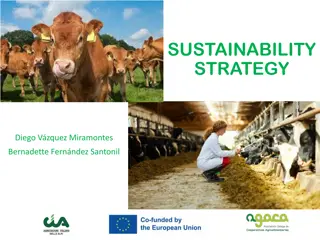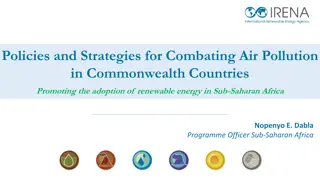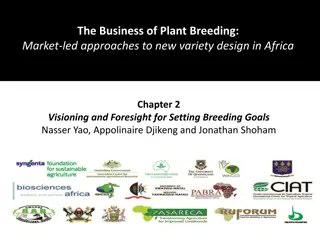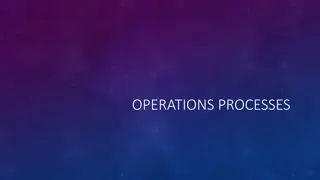Transforming Agricultural Education in Africa for Sustainable Development
Agriculture plays a crucial role in SSA's economy, and transforming agricultural education is essential for sustainable rural development. The sector faces challenges such as population growth, climate change, and limited market access for smallholder farmers. To address these issues, there is a need for governance reform, updated curricula, skill development for staff, utilization of ICT, and fostering partnerships.
Download Presentation

Please find below an Image/Link to download the presentation.
The content on the website is provided AS IS for your information and personal use only. It may not be sold, licensed, or shared on other websites without obtaining consent from the author. Download presentation by click this link. If you encounter any issues during the download, it is possible that the publisher has removed the file from their server.
E N D
Presentation Transcript
Education and Innovation in Agriculture and Life Science: Universities as Entrepreneurs for Sustainable Rural Development Prof Frans Swanepoel African Doctoral Academy Stellenbosch University, South Africa Prof Aldo Stroebel National Research Foundation, and University of the Free State, South Africa GCHERA, Beijing, 21 October 2013
The need to transform TAE in Africa Agriculture is the dominant economic sector in SSA (WB, 2008) 40% of GDP 25% of exports 70% of employment across the continent Growth in agriculture, esp. smallholder farmers (SHF) - major contribution towards broad-based poverty reduction and economic growth, addressing the MDGs Widely recognised that Africa will not develop unless its institutions and people are empowered to lead and manage Appropriate and adequate TAE is therefore essential and underpins all development efforts (WB, 2006; USAID, 2010) Yet Africa s TAE system has been largely neglected over the last three decades Enabling this system to contribute effectively to FAAP will require a radically new approach, transforming the way HEIs fulfil their mission
Exciting times for AET Continued population growth Decreasing size of rural populations Adapt to climate change Stagnation of crop yields Depletion of natural resources Global trade Difficulties in access to markets for African SHF Scientific breakthroughs
Who are we as Agriculture? Complex system (sector) Organizationally fragmented Isolated from mainstream DHET, DST Niche player in the field of education
How good are we at what we do? Are our products highly regarded and sought after? Are our teachers skilled and dedicated? Are we accountable for quality? Are our educational packages based on regular needs assessments?
How to build capacity? Clarifying our role, as well as the needs of sector and stakeholders Delivering a quality educational product Linking with other academic institutions and with private sector Pressing for governance reform Providing life-long learning
Areas in need of attention Governance reform Relevant and realistic curricula Reaching beyond the classroom Developing staff skills Harnessing power of ICT and social media Cultivating partnerships
India took an integrated approach toward improving SHF productivity Invested to build a new education system: - Two joint Indian-American committees in 1950s recommend land grant system - USAID funding partnership for founding of initial SAUs included provision for technical asst. from US land grant institutions Supportive policy for SHFs: - Government actively sought help from foundations and other donors - Sustained investment in health, irrigation, electricity, rural infrastructure and credit schemes - Provided input subsidies to SHFs Policy Education Smallholder farmer Research Extension Invested to build research capacity. Used three investment strategies: - Human capital investment through fellowships - Reorganization of higher ed. programs at the Indian Agricultural Research Institute (IARI) and ~$540M for reform to research based on agroclimactic zones - Reorganization of the Indian Council of Agricultural Research Invested to reform extension: - National extension reform, giving SAUs control of state extension system - Large-scale, rural extension build-up upon request from Indian government Sources: Eicher (2006); Pal, Suresh and Beyerlee (2006); Lele and Goldsmith (1989)
To fill needed roles in the sector, with direct benefits for SHFs: Right Supportive Environment institutional mix Universities Strategic priority for agricultural & rural development In adequate numbers to meet sector demand for Researchers Agricultural colleges Graduates with appropriate skill mix and levels Academic Staff Other Policy makers and bureaucrats Increased agricultural productivity for SHFs and the agricultural sector as a whole Researchers With adequate resources Sufficient & sustainable funding for AET institutions PhD Academic Staff Academic staff MSc & indirect benefits for SHFs: Policy makers &bureaucrats Relevant curriculum BSc Managers &entrepreneurs Research & knowledge creation Facilities/ Resources Secondary school supply Diploma/ Certificate Extension or: agents Research capacity Policy analysis & development Teaching & training With strong linkages to and feedback mechanisms from: Extension workers SHF s Researchers Agribusiness Policymakers Linked to and supported by regional and global institutions, networks and collaborations
Four investment opportunities Build AET capacity Expand/create new programs Improve quality and alignment with needs Create pre- conditions SHF aligned ag. dev. policy environment Government commitment to the sector Right institutional mix Right institutional mix Right institutional mix Right institutional mix Supportive environment: environment: environment: environment: Supportive Supportive Supportive Universities Universities Universities Universities To fill needed roles in the sector, with direct sector, with direct sector, with direct To fill needed roles in the sector, with direct benefits for SHFs: benefits for SHFs: benefits for SHFs: benefits for SHFs: To fill needed roles in the To fill needed roles in the Graduates with appropriate skill mix appropriate skill mix appropriate skill mix Graduates with appropriate skill mix and levels: and levels: and levels: and levels: Graduates with Graduates with In adequate numbers to meet sector demand for: meet sector demand for: meet sector demand for: meet sector demand for: In adequate numbers to In adequate numbers to In adequate numbers to Strategic priority for agricultural and rural development development development development Strategic priority for agricultural agricultural Strategic priority for agricultural and rural and rural and rural Strategic priority for Polytechnics Polytechnics Polytechnics Polytechnics Skill-building & problem solving problem solving problem solving problem solving Skill-building & Skill-building & Skill-building & Technical colleges Technical colleges Technical colleges Technical colleges Researchers Researchers Researchers Researchers PhD PhD PhD PhD Increased agricultural productivity for smallholder farmers and the agricultural sector as a Increased agricultural productivity for smallholder farmers and the agricultural sector as a whole whole Market Development Development Development Development Market Market Market Other Other Other Other Faculty Faculty Faculty Faculty MSc MSc MSc MSc Sufficient and sustainable funding for funding for Sufficient and sustainable funding for TAE institutions institutions institutions institutions Sufficient and sustainable Sufficient and sustainable funding for TAE TAE TAE Policy makers and Policy makers and Policy makers and Policy makers and bureaucrats bureaucrats bureaucrats bureaucrats With adequate resources: With adequate resources: With adequate resources: With adequate resources: BSc BSc BSc BSc Faculty Faculty Faculty Faculty Managers and entrepreneurs entrepreneurs entrepreneurs entrepreneurs Managers and Managers and Managers and Diploma/certificates Diploma/certificates Diploma/certificates Diploma/certificates Curriculum Curriculum Curriculum Curriculum and indirect benefits and indirect benefits and indirect benefits and indirect benefits for SHFs: for SHFs: for SHFs: for SHFs: Extensionists Extensionists Extensionists Extensionists Supply of secondary school graduates graduates graduates graduates Supply of secondary school school school Supply of secondary secondary Supply of Facilities/ Resources Resources Resources Resources Facilities/ Facilities/ Facilities/ Research & knowledge creation knowledge creation knowledge creation knowledge creation Research & Research & Research & Research capacity Research capacity Research capacity Research capacity Policy analysis and development development development development Policy analysis and Policy analysis and Policy analysis and Teaching and training training training training Teaching and Teaching and Teaching and With strong linkages to and feedback mechanisms from: With strong linkages to and feedback mechanisms from: With strong linkages to and feedback mechanisms from: With strong linkages to and feedback mechanisms from: Smallholder farmers farmers farmers farmers Smallholder Smallholder Smallholder Extension Extension Extension Extension workers workers workers workers Strengthen regional/global initiatives Regional AET institutions Access to information resources Research collaboration Researchers Researchers Researchers Researchers Agribusiness Agribusiness Agribusiness Agribusiness Policymakers Policymakers Policymakers Policymakers Address country systems barriers Pro-SHF decision systems Improve AKIS* coordination Decentralize AET/AKIS* Strengthen funding platform Linked to and supported by regional and global Linked to and supported by regional and global institutions, networks and collaborations institutions, networks and collaborations *AKIS Agricultural Knowledge Information System
Towards Agricultural Innovation International evidence suggest that fostering of agric. innovation through enhanced research support and entrepreneurship will become a key driver of development in SSA
Human and institutional capacity framework Source: Moock (2011)
Networking to enhance Agric. Innovation Generating economies of scale among research universities that are small and cannot cover core and specialized courses in most postgraduate agricultural fields; Building of credibility and legitimacy for African governments and donors in demonstrating solid academic programmes that engage with other stakeholders in the agriculture sector and produce employable graduates; Exploiting both the lessened inflexibility of faculties under more democratized and decentralized university management, and complementarities and synergies in innovation; Promoting quality assurance through interaction, information sharing, and peer review; Strengthening links between academic research centers and the private sector; Building a critical mass of female scientists in the face of the narrow pipeline of female students surfacing from undergraduate studies at individual universities; and Harnessing movements toward regional integration that present opportunities for reducing costs of research and training and avoiding duplication. Create dynamic self-teaching systems that speed up innovation (Juma, 2011) Produce scientist entrepreneurs, create professional career structures, build economies of scale and serve as leverage points for translating knowledge into innovation and application (Moock, 2011)
Six Key Recommendations Integrate internationalisation priorities with institutional, national & global imperatives Apply parallel top-down & bottom-up process (focus at three institutional levels top management; researchers; support staff) Procure seed funding (internal/external) to launch internationalisation, especially for human resource & infrastructure capacity Establish good working relationships between staff (research & international offices & faculties) at the outset Focus on large income-generating projects & agreements Identify & utilise existing institutional research strengths Robust and supportive knowledge management/ M&E system
